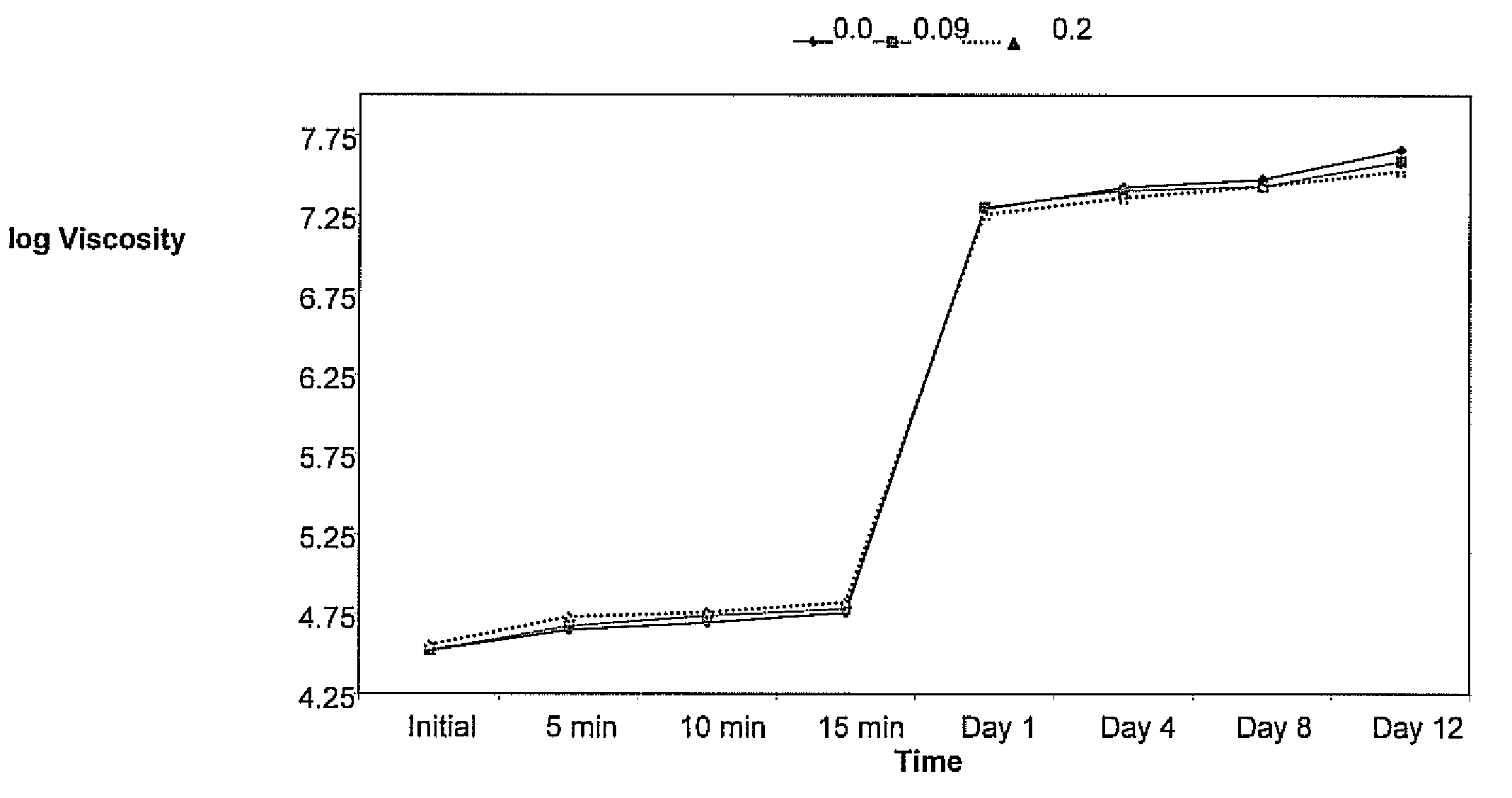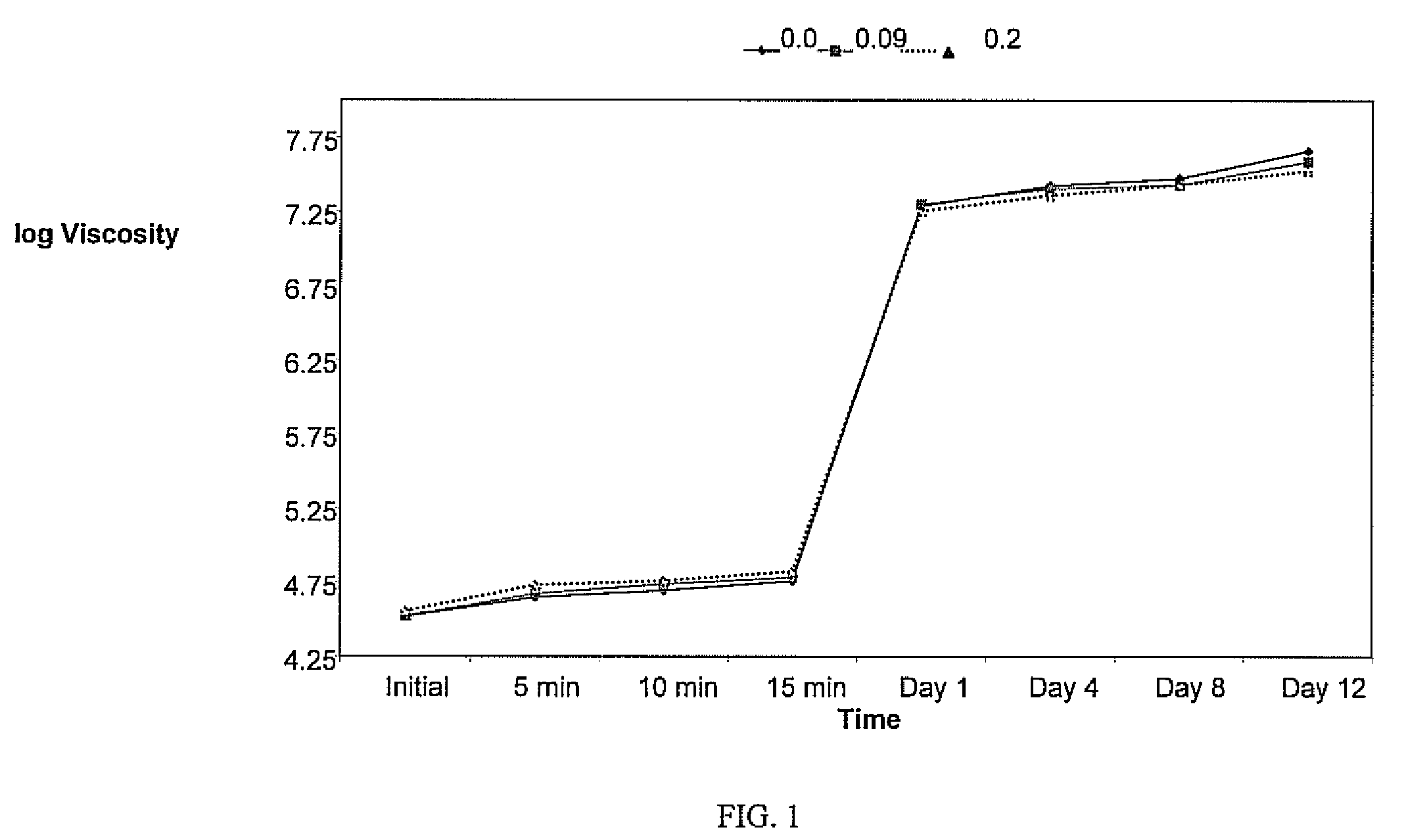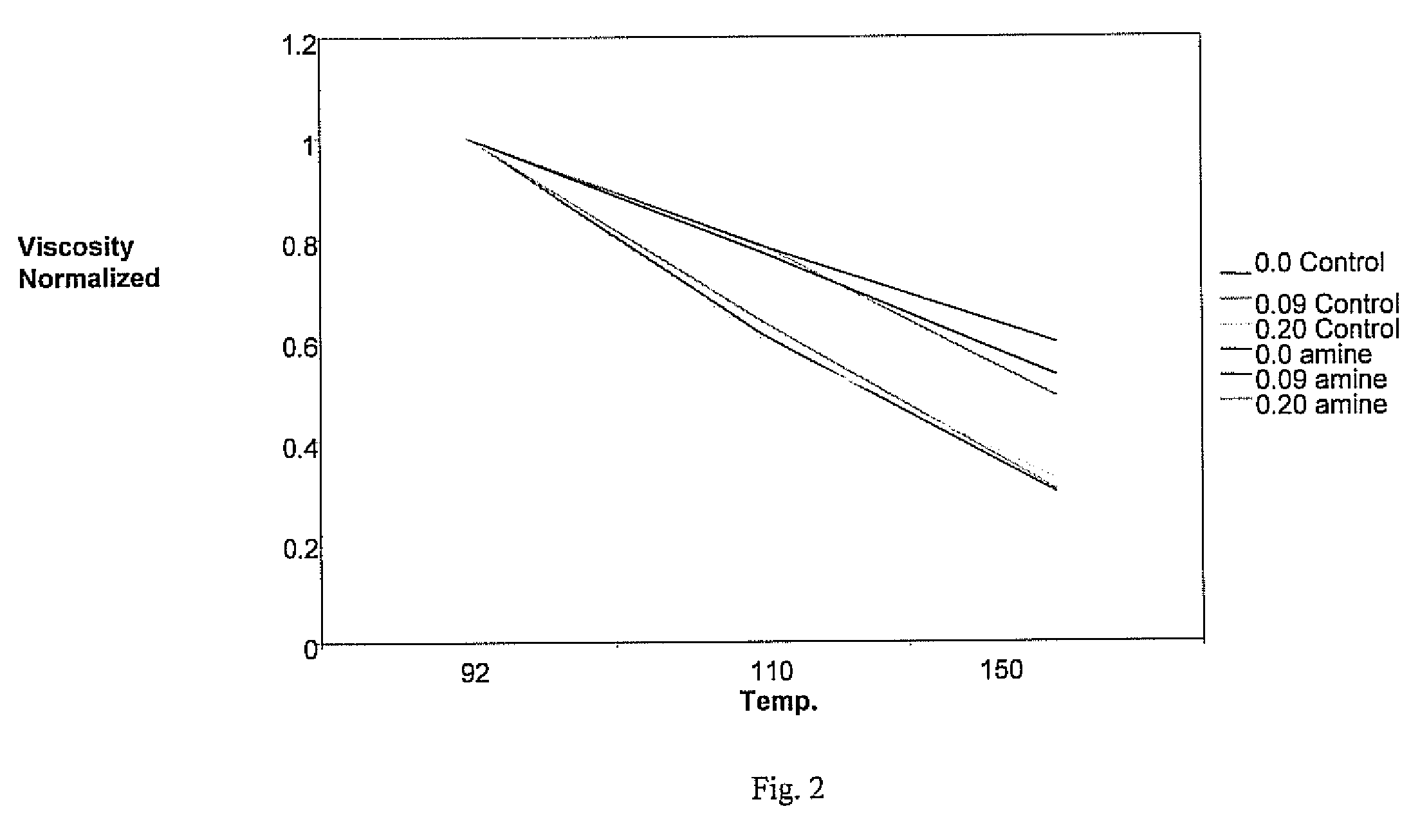Polymeric thickener for molding compounds
a technology of polymer thickener and molding compound, which is applied in the field of polyurea thickening additives, can solve the problems of reduced viscosity, less than desirable material flow associated with diisocyanate thickener within the mold, and limited success in improving the properties of molding compound, etc., and achieves the effect of superior handling and moisture insensitivity
- Summary
- Abstract
- Description
- Claims
- Application Information
AI Technical Summary
Benefits of technology
Problems solved by technology
Method used
Image
Examples
example 1
[0037]Polyoxypropylenetriamine (PPT) having an average molecular weight of 400 is mixed into a conventional sheet molding compound prototype formulation containing unsaturated polyester resin, thermoplastic additives, organic peroxides, inhibitor, filler, mold release, and pigment sold by Continental Structural Plastics under the trade name TCA®. This base formulation serves as a control, This amine mixture is added to 0.07 total weight percent of the molding compound formulation. A polyurethane having a isocyanate function of 2.7 and molecular weight of 28,000 is present as 75% by weight in a styrene monomer solution and used as an isocyanate source. The polyurethane solution is added to the molding compound formulation to an amount of 2.3 total weight percent of the molding compound formulation. Water is added to the resultant formulation at levels of 0, 0.09 and 0.2 parts per hundred of molding compound polymeric resin in order to simulate a range of ambient humidity conditions. ...
example 2
[0038]The base molding compound formulation detailed in Example 1 and that containing the inventive amine and isocyanate components also of Example 1 each had added thereto water to 0, 0.9 and 0.2 parts per hundred of polymeric resin. The resulting mixtures are subjected to a temperature sensitivity study in which viscosity is measured for each sample at three different temperatures of 92°, 100° and 150° F. and then normalized. The results of this study are shown in FIG. 2 and indicate that the inventive formulation has reduced temperature sensitivity as compared to the control.
example 3
[0039]Experimental batches were based on a conventional sheet molding compound formulation containing unsaturated polyester resin, thermoplastic additives, organic peroxides, cure inhibitor, filler, mold release and pigment and correspond to the control formulation detailed in Example 1.
Inventive Hybrid Magnesium Compound Polyamine / Polyisocyanate Thickener
[0040]To produce the hybrid inventive formulation containing both alkali earth oxide or hydroxide thickener and polyamine / polyisocyanate thickener, this base formulation is modified to include either: (A) 0.125 total weight percent of magnesium oxide, 0.0375 total weight percent of polyoxypropylene triamine having an average molecular weight of 400, and 1.75 total weight percent of a polyurethane having an isocyanate function of 2.7 and a molecular weight of 28,000 (NCO:NH2=1:1.7); (B) 0.24 total weight percent magnesium oxide, 0.06 total weight percent of polyoxypropylene triamine having an average molecular weight of 400, and 3 t...
PUM
| Property | Measurement | Unit |
|---|---|---|
| molecular weight | aaaaa | aaaaa |
| molecular weight | aaaaa | aaaaa |
| viscosity | aaaaa | aaaaa |
Abstract
Description
Claims
Application Information
 Login to View More
Login to View More - R&D
- Intellectual Property
- Life Sciences
- Materials
- Tech Scout
- Unparalleled Data Quality
- Higher Quality Content
- 60% Fewer Hallucinations
Browse by: Latest US Patents, China's latest patents, Technical Efficacy Thesaurus, Application Domain, Technology Topic, Popular Technical Reports.
© 2025 PatSnap. All rights reserved.Legal|Privacy policy|Modern Slavery Act Transparency Statement|Sitemap|About US| Contact US: help@patsnap.com



